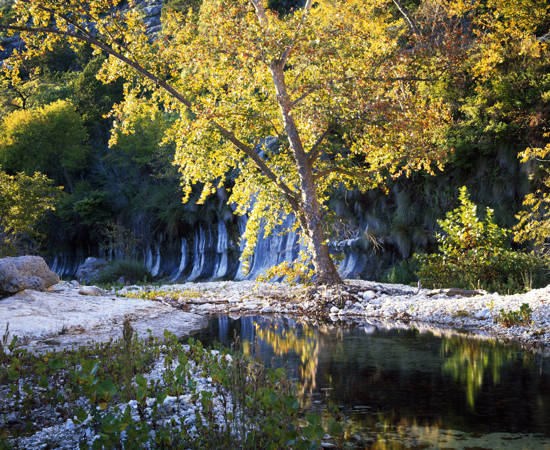
NRI Map Store featured in The Austin Chronicle
NRI's new Map Store featured in The Austin Chronicle's Day Trips & Beyond: September Events Roundup
Read ArticleTexas A&M AgriLife guides solutions where wild and urban lands meet
From wildfire resilience to wildlife management, experts tackle Texas’ growing ‘wildland-urban interface’
Read ArticleFrom Maps to Mentorship: NRI partners with Borlaug Youth
The story of Texas’s working lands, or privately owned farms, ranches, and forests, is one of rapid changes that have widespread implications for national and food security, rural economies, and the conservation of wildlife, water, and other natural resources. Over 139 million acres of valuable landscapes supporting these processes are threatened by suburbanization, rural development, and land fragmentation driven by rapid economic and population growth.
Read ArticleNRI publishes Status Update and Trends of Texas Working Lands 1997-2022
The new Texas Land Trends program report Status Update and Trends of Texas Working Lands 1997–2022 celebrates over two decades of applied research and extension outreach at the Texas A&M Natural Resources Institute (NRI). Since its inception, the program is an important resource in understanding the complex landscapes of Texas’ working lands—farms, ranches, and forests increasingly threatened by rapid population growth.
Read ArticleFarm and ranch lands program safeguards millions in water conservation, flood prevention and ag productivity
NRI released the 2024 evaluation report today for the Texas Farm and Ranch Lands Conservation Program (TFRLCP) publishing key findings to support the program’s efforts to help safeguard the public benefits derived from working lands.
Read ArticleNRI Scientists Mentor Youth in the Norman Borlaug Youth in Agriculture Program
Because we are uniquely positioned to speak on land trend issues, we seek to share our expertise about critical natural resource issues with all Texans. Most recently, we had the chance to mentor some of our future leaders and on how they can work together to improve Texas lands from their own hometowns.
Read ArticleFeatured Map: Out of this world imagery for natural resources management
What do natural resources professionals have in common with rocket scientists? More than you might think. Spacecraft-based cameras that orbit the globe have been providing images that guide natural resource management for decades.
Read ArticleInvesting in Conservation: Quantifying ecological return on investment
Conserving Texas: Quantifying Ecological Return on Investment was developed to better understand the current benefits and needs for financial investment in our state's natural resources to best support our growing state population, the stewards of the land, our thriving economy, and healthy landscapes.
Read ArticleSan Antonio Rodeo Seminar Recap
Our director, Dr. Roel Lopez, recently had the pleasure of speaking at the Wildlife and Natural Resources Seminar at the San Antonio Stock Show and Rodeo.
Read ArticleFeatured Map: What satellites tell us about drought in Texas
Scientists employ various methods, models and data to track weather patterns, including drought – a condition closely monitored by Texans, especially those involved in agriculture and natural resources.
Read Article










